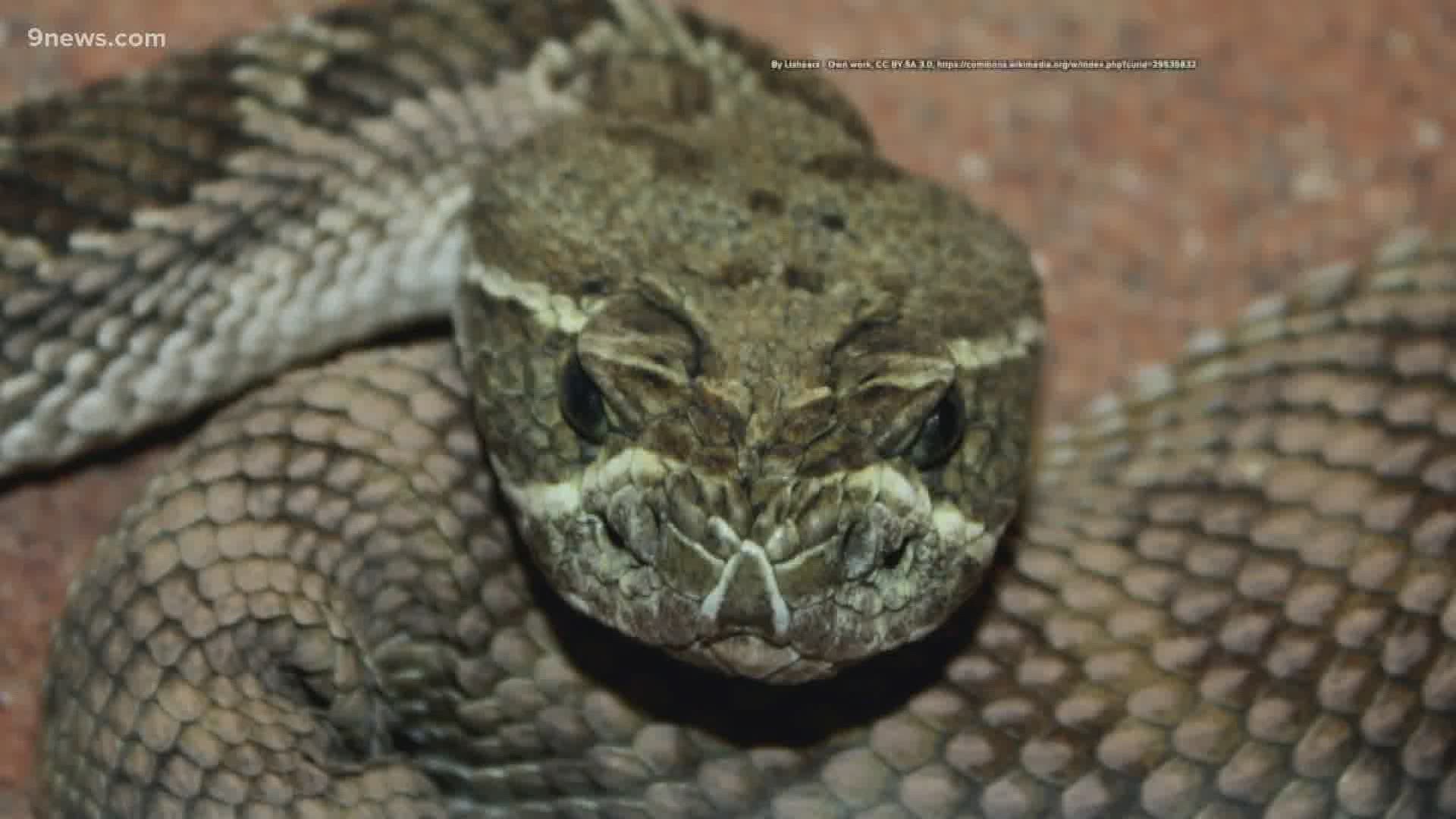DENVER — It is now officially rattlesnake season.
Read below to learn how to identify rattlesnakes, where you might find them and what to do if you've been bitten.
Where will I see rattlesnakes?
Rattlesnakes like rocky outcroppings, grasslands, rocky stream crossings and ledges. They den in prairie dog burrows, rock crevices or caves.
You might see them on trails, most likely stretched across the trail to soak up warmth. It's likely they're in grasses and other vegetation beside a trail, a good reason to stay on the beaten path.
Here are common areas to see rattlesnakes in northern Colorado:
- Horsetooth Mountain Open Space
- Devil's Backbone Open Space
- Cathy Fromme Prairie Natural Area
- Coyote Ridge Natural Area
- Pineridge Natural Area
- Reservoir Ridge Natural Area
- Bobcat Ridge Natural Area
- Greyrock Trail
- Hewlett Gulch
When am I likely to see rattlesnakes?
Rattlesnakes are active from early spring through mid-fall and hibernate in winter.
They are more active in spring, shortly after emerging from hibernation, so you might see a flurry of activity on the trails through May.
In summer, rattlesnakes are not likely to be seen in great numbers but might be seen individually in their typical habitat, which can range up to two miles. Mornings and evenings are common times to see rattlesnakes out of their dens since temperatures are cooler.
In fall, you might see another flurry of activity as the rattlesnakes seek a warm place to hibernate for the winter.
What is the difference between a rattlesnake and a bull snake?
If you can't see the rattle, there are several other identifying features:
- Rattlesnakes have a chunky body with a blunt tail; bull snakes have a long, lithe body and pointed tail (with no rattle), though both snakes can make a rattling sound.
- Rattlesnakes have a white stripe pattern on the face; bull snakes have a black stripe over the eyes.
- Rattlesnakes have a wide head and narrow neck; bull snakes have heads and neck that are the same width.
- Rattlesnakes have eyes that are vertical slits; bull snakes have round pupils.
What do I do if I encounter a rattlesnake?
If you see a rattlesnake coiled and/or rattling, that means it's agitated. Keep your distance. Leave it alone. Rattlesnakes can strike at a distance of two-thirds of their total body length.
Wait for the snake to leave the trail. They are afraid of you, and prairie rattlesnakes, most commonly found in Northern Colorado, are the least aggressive rattlesnake.
If the snake is going across the trail, stand still and wait for the snake to move away. Snakes do not see well, but they perceive sudden movement as a threat.
What do I do if I've been bitten?
If you or a member of your hiking party is bitten, look for swelling and large, bloody or dark-colored blisters forming in the bite area. Either of these symptoms means the bite was venomous. Some bites are dry, with no venom injected.
Call 911. Getting to a hospital as soon as possible is your main priority. Time is of the essence. Deaths due to snake bites often involve cases of elderly patients and delayed hospital care.
Keep the patient as calm as you can and gently immobilize the bitten limb, if possible, with an improvised splint. Don't tie it too tight, however. You don't want to reduce blood flow.
Remove all jewelry, watches and any other constricting clothing near the affected area in case of swelling.
Do not ice, use a tourniquet, try to suck out the venom (it doesn't work), or try to catch and kill the snake.
There are three venomous snakes in Colorado, according to Colorado Parks and Wildlife; prairie rattlesnakes, massasauga rattlesnakes, and midget-faded rattlesnakes.
What about my pet?
Dogs are more likely to die from rattlesnake bites than humans due to the difference in body weight.
Keep dogs on a tight leash if you're in rattlesnake country. Dogs roaming free are more likely to be bitten by rattlesnakes than leashed dogs, and more than likely will be bitten on the nose or face from sniffing the ground.
Get your dog to a vet as soon as possible if it's been bitten. Know beforehand if your vet stocks anti-venom.
SUGGESTED VIDEOS: Animals and Wildlife

